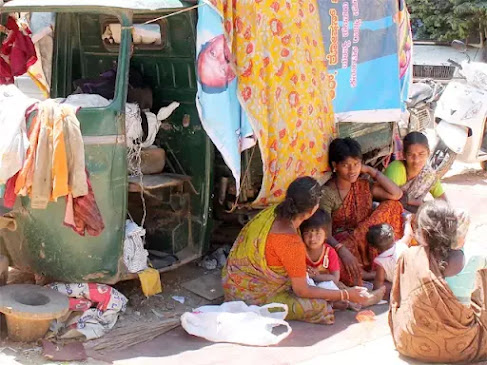A PRIMER - DEVELOPMENTAL REPORTING
As a young cub reporter starting her career in 2018 in the media industry, I learnt a lot of tips, tricks and techniques from my esteemed professors from India's premiere journalism school, the Asian College of Journalism, about how to do developmental reporting. The nuances of covering poverty, deprivation, and reporting on other sensitive socio-economic issues are crucial today. None of the media journalism schools in India teaches young media students and aspiring journalists the ethics of developmental journalism. Still, I am incredibly thankful for the curriculum of my college that provided us with strict guidelines and non-negotiables for covering deprivation with utmost empathy and sincerity.
Here I want to touch down upon the basics of it, which I keep going back to now and then, to keep my reporting foundation solid. I would also like to thank Professor P. Sainath for all his valuable insights.
Before visiting the rural area, we have to do some essential preparation. The first thing is to search for the places we want to visit. We can find basic information about that particular area in some ways. Download the district census Handbook on a laptop or phone or look at the district's census of India 2011 on the website and check the area or neighbourhood you want to visit for covering deprivation. Read the demographic information data. Read all the previous articles regarding that area. Demographic data information and reports are available worldwide, but since India is a big country, use the district census of India. Some places in India have different spellings, so we must find the correct spelling of the district census or website.
Sometimes news events do not present the actual picture and make us blinded towards the ground realities, but by getting the census, we can plan our visit much better. It helps us plan how much time we will spend at a specific place and what we will do during that particular time. More than the district census of India and web data is also often needed for some areas.
According to P. Sainath, you must avoid adjectives in describing a place and try to follow up-to-date information. Refrain from using old information; it may need to be corrected. Suppose there is a need for more information. In that case, one should talk to different people, connect with government officials, NGOs, and the local people who are educated and well-aware and can provide you with information about the area.
While visiting a village, focus on three things:
An equal level of asking questions, as you have the right to ask questions to people in the rural areas, they also have the right to request and counter-quest you. Let them ask you their questions and you give them the answers patiently.
Explain to your subjects who you are and what you do in great detail. You need to prove your credibility in order to win their trust. They have to believe that you are someone who can correctly write and publish their story.
Make them comfortable and feel at ease before starting your main point. You need to converse with them about general things, which will make them comfortable to talk to you in front of the camera and other recording equipment.
You have to observe basic principles like not harming your interviewee. You have to be responsible for your interviewee and account for them. You are the person who can ensure their safety and security.
Given the power dynamics and differences in class and caste status, do not make your sources, leads and subjects insecure. Understanding the village or community-level dynamics is another crucial point when visiting deprived communities.
On your first visit, wait to contact the labourers at the beginning, contact the landlords first, and they will suggest labourers with whom you can talk. If you do not do that and write something against the landlords, they will target the labourers who gave you the information about their deprivations.

Refrain from showing your recording equipment at the beginning, as it may put a lot of unwanted initial pressure on your interviewee. Always take their permission first and then use your equipment. Whenever you visit any of your subject’s houses, look at the type of home accessories they have and try finding their water source.
Ask about their education qualifications and where their children go to school. Try finding out if any educational source is available or not.
Ensure you write the person's proper name because everyone wants to see their name correctly in the news.
During your visit, if you find some NGO workers present, take your time with their version of the story and the information that they have given about the area. They may manipulate you and will provide you with skewed or biased information. To ensure that the provided information is correct, you must contact other stakeholders and verify it.
To vet and verify the correct information, engage in dialogues with local people of the area, and talk to the governmental officers of the area.
The reporter should be a storyteller and present all the facts in a simplified way, also bringing out the core human value of that story. Writing a good story requires engaging storytelling and intellectual curiosity. It is only because of the reporter's novelty that all the essential developments will be mentioned in the report, making it interesting to the audience. And it would be better to avoid indirect quotes. Third-person quotations should also be avoided.
After collecting all the information during your visit, the story should be written well within the time frame. Each story has an urgency value determined by the duration of time. One should write and publish the account as soon as possible otherwise, it will turn old and obsolete and lose its reading value according to the present context, and no one will be interested in your story.




Comments
Post a Comment